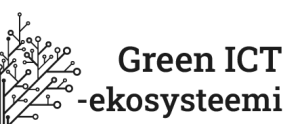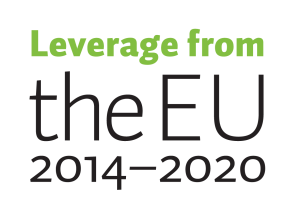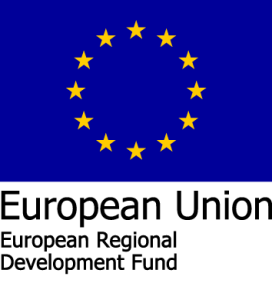
The ICT and software sector has become more complex. This is due to the multiple stakeholders who competitively and cooperatively collaborate to satisfy the needs and demands of customers. Gone were the days when devices and software products resulted from a single ICT or software company. Nowadays, ICT and software solutions tightly depend on other complementary services and components from myriads of stakeholders (e.g., component manufacturers, suppliers, developers, platform vendors, buyers, etc.) to innovatively provide competitive value to solve society’s complex problems. Due to the complexity of customer and societal challenges, it is no longer possible for ICT and software-related businesses to operate in isolation. The success of today’s firms depends on how well the firms manage their relationship and interdependencies with other stakeholders in an ecosystem to provide a competitive value to customers. These interdependencies and complementarities form an ecosystem.
ICT ecosystems, like other ecosystems such as digital business ecosystems or software ecosystems, refer to the interactions between various stakeholders: network element providers (those who provide the individual elements of networks); network operators (those who create and operate networks); platform, content, and applications providers (those who use elements and networks to provide content and applications); institutions and agencies (those who shape the rules of the ecosystem) and finally the consumers (organisations or individuals). Primarily, these diverse stakeholders form the backbone of the ICT ecosystem since they are responsible for the output of the ecosystem (Radu, 2016).
Indeed, ICT and software applications have transformed the way individuals and organisations work, tremendously increasing productivity and enhancing economic growth and inter-trade across nations. However, despite the positive impacts of ICT and software solutions, society and the environment are now paying the price in the area of e-waste, energy use, and environmental pollution (Vishwakarma et al., 2022). As such, the attention and shift towards Green ICT have gained momentum globally, partly driven by a growing number of international policies and consumer demands for sustainable products and services.
The ever-growing demand and dependency on ICT devices, software solutions, and “Big Data” or Data-as-a-Service (DaaS) has brought with it unintended consequences that require collective and urgent attention. For example, Cloud Computing was and is still a promising technology that opens lots of business opportunities to organisations. However, the energy consumption for these centralised computing infrastructures (data centres) is becoming an environmental concern that needs urgent attention. There have been a number of efforts to provide a definitive cost model for the new digital age. However, the truth is that the complexity and interdependencies among products, services, and relationships entail that companies behind these ICT products and software applications need to collaborate within an ecosystem. They need to share best practices, brainstorm on the possible negative impacts, and take bold steps in developing and implementing strategies to minimise the ramifications.
As such, the Green ICT ecosystem, which was launched in June 2022, aims to help ICT producers adopt green ICT practices in their operations, products and services. The term Green ICT refers to a combination of interdependent activities and relationships among a set of stakeholders to minimise the negative impact of ICT and optimise ICT’s positive impact on individuals, society, businesses, and the environment (Radu, 2016). Green ICT is gaining popularity among scholars and practitioners, whether they wish to save the planet, improve energy efficiency, promote sustainable development, or increase the reliability of information systems. The term often refers to either making the ICT sector itself more sustainable or using ICT to cause the same effect in other industries.
To encourage ICT related stakeholders to adopt green and sustainable practices, it is essential to assess their challenges. As such, we conducted a survey in the early phase of the Green ICT Ecosystem project and found that a large majority of ICT related stakeholders are not aware of or even taking concrete actions towards green transition. The research found that:
- 61% of ICT related companies neither have a green ICT professional or environmental manager in place at their premises, nor provide green ICT training or materials to their employees.

- Furthermore, although ICT is a significant consumer of energy, only 14% of the respondents monitor and measure the energy consumption of their ICT devices while an astonishing 53% do not (know how to) monitor and measure their ICT energy consumption.

- The survey findings provided insights about the need and challenges of ICT ecosystem stakeholders in adopting green ICT practices in their business operations.
Where can companies get help with their green ICT transition?
The Green ICT ecosystem seeks to close a knowledge gap by providing a platform for climate and environment conscious ICT and its usage. The Green ICT ecosystem is a network of organisations, uniting professionals to promote the ICT sector’s sustainable transition. Stakeholders include professionals from academia, public administration, private companies of all sizes and NGOs. The ecosystem also creates new opportunities for cooperation and facilitates dialogue between various interest groups.
The overarching objectives of the Green ICT ecosystem are
- to create new opportunities for cooperation and facilitate dialogue between various ICT ecosystem stakeholders
- to promote sustainable ICT development
- to increase competitiveness in the Finnish ICT sector, especially for SMEs
- to promote cooperation in business and RDI.
Due to the mounting pressure from international bodies, government policies, organizational commitments, and civil society groups to reduce carbon emissions, joining the Green ICT ecosystem offers stakeholders many benefits. First and foremost, contrary to popular belief that transitioning to green practices is expensive, being “green” means being efficient – not wasting money, resources or time (Restorick, 2009). Furthermore, being part of the Green ICT ecosystem helps to achieve Finland’s carbon neutral targets. As a result, organisations will be working with government policies and legislations, and not against it. Another benefit is that organisations joining the Green ICT ecosystem will be able to position themselves strategically and competitively in order to meet increasing demand for green ICT products and services.
Find out more about the Green ICT ecosystem
- Green ICT -ekosysteemi: aloitustapaaminen, 1.6.2022. In Finnish.
- Green ICT -ekosysteemi: Työkaluja vihreisiin hankintoihin, 13.12.2022. In Finnish.
- Green ICT -ekosysteemi: Käytännön työkaluja kestävyystyöhön, 16.3.2023. In Finnish.
- Green ICT -ekosysteemi: Vihreys ICT-liiketoiminnan ytimessä, 23.5.2023. In Finnish.
References
- Shilpa Vishwakarma, Vimal Kumar, Shashi Arya, Mamta Tembhare, Rahul, Deblina Dutta, Sunil Kumar. E-waste in Information and Communication Technology Sector: Existing scenario, management schemes and initiatives. Environmental Technology & Innovation,Vol. 2022, 27, 102797. https://doi.org/10.1016/j.eti.2022.102797.
- Radu, L.-D. Determinants of Green ICT Adoption in Organizations: A Theoretical Perspective. Sustainability 2016, 8, 731. https://doi.org/10.3390/su8080731
- Restorick, T. Green ICT Handbook: A Guide to Green ICT. Global Action Plan, (2009).






